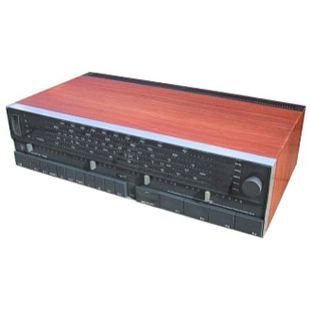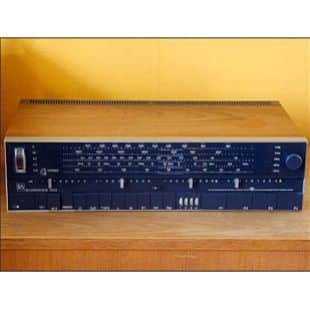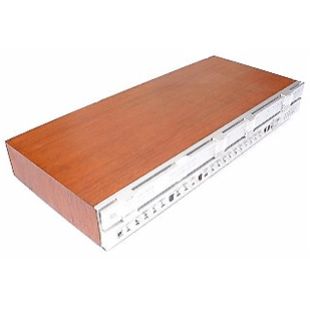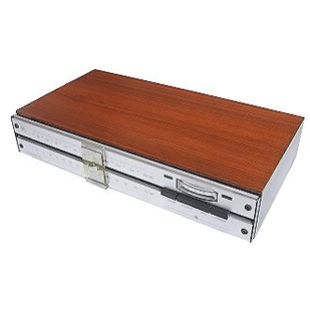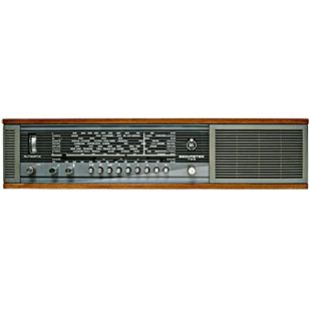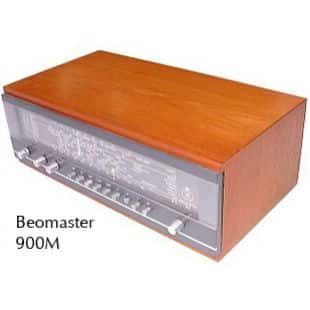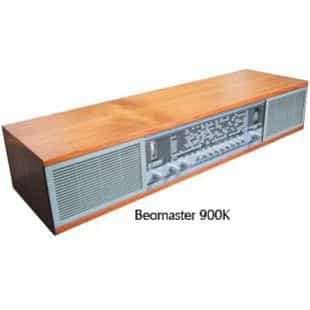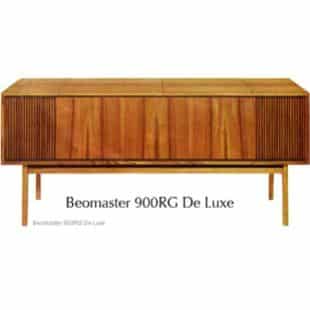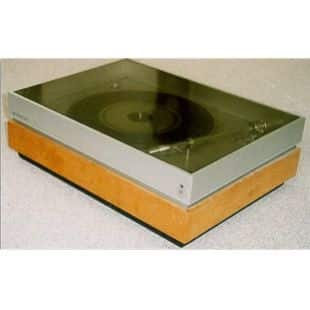BeoMaster 1200
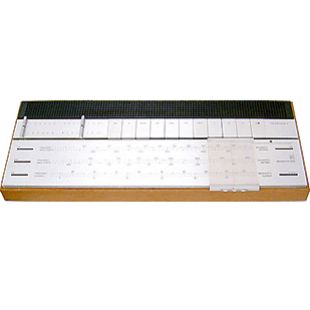
The Tombstone: The simple, modernist graphic is the essential element in Jacob Jensen mechanical designs for Bang & Olufsen. The type-face used on the surface is Helvetica, popular in the post-War era and used by many publications today. The Beomaster was only a plate with an inscription and so it was given the sobriquet of ‘The Tombstone’.
“The Danish Press in 1967 referred to the Beolab and Beomaster 5000 as a “cinema system in two cigar boxes”. With the Beomaster 1200, which was aimed at a broader sector, B&O were ready to go the whole hog and abandon all known notions as to how a radio receiver should look. The reduction was absolute: to a wooden frame around an operating surface. The body of the apparatus disappeared, and only a small cooler grill at the top serves as a reminder of the contents. The totally top-operated equipment can be hung vertically on the wall as a decoration along with the simply framed art products of the time.
This is a slide rule gone mad. The knobs have become part of the polished aluminium surface – flush”! However, not only have the knobs been made flush with the surface, but superfluous functions have also been removed. For Jensen design is a question of considering the consumer’s functional needs. Five permanently set stations are selected below the aluminium sheet in the right-hand corner; user friendliness in everyday life is at the heart. The compact technology has turned the designer into a fashioner of operating aggregates.” — taken from ‘Jacob Jensen’ by Christain Holmsted Olesen.
Beomaster 1200 – type numbers 2501, 2503 – was, at the time of its introduction in 1969, one of the world’s most modern-looking and sophisticated receivers. It incorporated an amplifier around an FM/AM tuner. Radio stations could be tuned in by means of a sliding scale. The format of Beomaster 1200 was to set the trend in Bang & Olufsen design for many years to come.
Beosystem 1200 – made up of Beomaster 1200, Beocord 1200 and Beogram 1200 was the second of Bang & Olufsen’s first ‘designed’ system. The very first was Beosystem 1000 in 1965. The design ‘kinship’, which emphasised the interdependence between B&O’s various products, became a characteristic of B&O for many years. Beosystem 1200 was one of the first products selected by the Museum of Modern Art for the museum’s permanent collection (not exhibition) in 1972.
In 1969 the Danish Society of Industrial Design awarded Bang & Olufsen and Jacob Jensen the ID prize for the Beomaster 1200 radio/amplifier, Beogram 1200 turntable and Beocord 1200 cassette recorder for unusually beautiful and user friendly design. The jury emphasised in particular the Beomaster 1200 receiver which pointed in a new direction for the design of radios.
And the year after, three Bang & Olufsen products designed by Jacob Jensen received the IF award. The winning products were: Beomaster 1200 tuner/amplifier, Beomic 2000 microphone and Beolit 600 transistor radio.
“Congratulations! Well, we have done this before”, said Prince Henrik – The Queen of Denmark’s husband – when he presented the Danish ID award of the Society of Industrial Design to Bang & Olufsen, represented by Jacob Jensen, the designer. The remark made reference to the fact that B&O had also received the award the year before.
In Jacob Jensen the Museum of Modern Art in New York (MoMA) chose seven Bang & Olufsen products designed by Jacob Jensen to be included in their Design Collection as representing excellent examples of the Museum’s criteria for quality and historical importance; design, in fact, which had influenced the twentieth century. Beomaster 1200 was one of those seven products.
The 1200 series represented the logical continuation of the line of development and design which put B&O at the forefront of manufacturers of entertainment electronics. The receiver was superseded by Beomaster 1001 in 1973.
These are superb looking receivers and are especially impressive when wall mounted. However to sound at its best, it really does need to use the recommended loudspeakers. With more modern speakers, the 1200 can sound a little weak and lacking in detail. The provision of Beovox 1200 speakers however reveals very satisfying performance. This is one of many examples where B&O have clearly designed a system.

